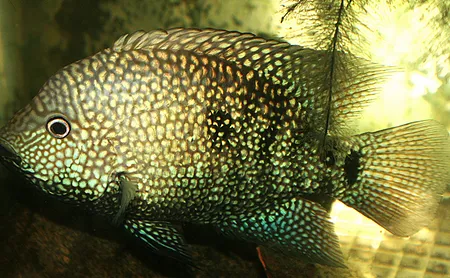The short answer (in my opinion) is that subgenus names are relevant in nomenclature and taxonomy, but should best be avoided in the aquarium fish hobby, or hobbies for other "pet"organisms. Again, in my opinion, using subgenus names when selling fish amounts to little else than snobbery. However, I do believe that in most cases, their use in the hobby has to do more with inocent lack of knowledge about zoological nomenclature, rather than anything else.
The longer answer has nothing to do with my opinion, and has to come from the ICZN (International Code of Zoological Nomenclature), henceforth referred as the Code: a few relevant excerpts below (NOT in order of appearance in the Code.
My own comments in italics):
xxxxx
Article 42. The genus group
42.1.
Definition
The genus group, which is next below the family group and next above the species group in the hierarchy of classification, encompasses all nominal taxa at the ranks of genus and subgenus (see also Articles
10.3 and
10.4).
42.2.
Provisions applicable to all genus-group nominal taxa and their names
Genus-group nominal taxa and their names are subject to the same provisions whatever their rank, except when these apply explicitly at one rank alone.
6.1.
Names of subgenera
The scientific name of a subgenus, when used with a binomen or trinomen, must be interpolated in parentheses between the generic name and the specific name; it is not counted as one of the words in the binomen or trinomen. It must begin with an upper-case letter.
[So, a subgenus name can be used for specific purposes but it is NOT part of the binomen (genus, species) for a given taxon]
4.2.
Use of names of subgenera
The scientific name of a subgenus must not be used as the first name in a binomen or trinomen unless it is being used at the rank of genus [
Art. 6.1].
xxxxx
In practical terms, it can be said that a subgenus is indeed a subgroup within a genus, containing species that have some character(s) in common among them, but not with other subgenera within the genus. However, they must conform to the diagnostic feature(s) of the genus, or they don't belong in it. They can be thought of as clades, but of course, a genus, or a family, or others can also be considered as clades and subclades. Species complexes (basically a group of species whose relationships are as yet not fully understood) may contain various subspecies, various species, and in some cases, sufficiently different taxa as to warrant genus group level changes.
Also, all subgenera in a genus belong to that genus. Equivalent to all subspecies by definition belong in the nominal species, or else, they have to be considered at the species level.
Finally, all these nomenclatural constructs are hypotheses about the relationships between organisms, the realm of taxonomy. Nomenclature just rules their naming. As new knowledge accrues, the current interpretation of relationships may change, and depending on the situation, appropriate nomenclatural changes may follow, also following specific rules. Modern methods, including molecular techniques and integrative methodologies (multiple lines of evidence such as biogeography, paleontology, anatomy, behavioral traits, and others) have and will continue to elicit changes to the names in use and thew inferred relations we may have learned years ago, and which we thought were the 'truth'.







